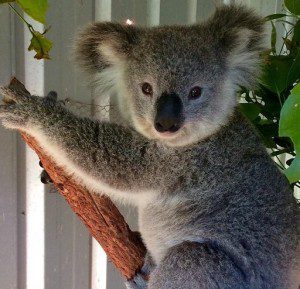
Koalas have been an integral part of the local bushland for hundreds if not thousands of years – from dreamtime stories of the Clinging Koala and the Bunyip to the first recorded European sighting of a koala in 1798 at Bargo by John Price.
In early 2015, Wollondilly Council launched the Wollondilly Koala Hotline asking the community to be its eyes and ears in reporting sightings so they can better understand where koalas are located and try to better manage their habitat for the future.
Despite their apparently chilled out behaviour of lounging around in gum trees and chewing on leaves, koalas are quite elusive, dynamic creatures that are difficult to find by the untrained eye.
Consequently most of our knowledge and understanding of where the koalas are located, how far they range and what they eat in the local area is limited.
Up to now there have been over 20 reported sightings ,which has motivated Wollondilly Council to secure funds to undertake its first ever koala survey in partnership with the Office of Environment and Heritage (OEH).
With the help of OEH, Wollondilly Council have identified key areas to target survey efforts based on the following criteria:
• Location of previous koala sightings using BIOnet, Koala Hotline, previous surveys;
• Areas where known food/habitat trees occur;
• Corridor connections to well-known populations in Campbelltown and Wingecarribee.
The project will utilise the services of experienced wildlife ecologists and will involve spotlighting and looking for habitat such as food and roosting trees.
These activities will be undertaken across two kilometre plots in up to six locations in Appin, Broughton’s Pass, Wilton and Pheasants Nest.
For more information about the Wollondilly Koala Hotline call Wollondilly Council on 4677 1100.

Joe